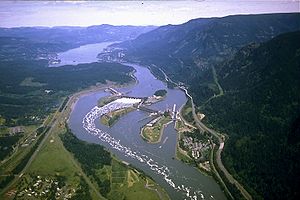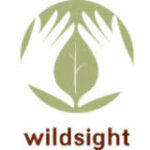Dr. Ralph Behrens provides heaps of tips for local gardeners
The latest instalment of the Rossland Real Food’s sustainability conversation series happened last Saturday afternoon at Cafe Books West. This was the third event in the series, which since its start in January has seen steady participation by Rosslanders wanting to ask questions or soak up information about living sustainably or gardening in and around the Mountain Kingdom. Saturday’s conversation saw over a dozen attendees who came to listen to the guest speaker, local physician Dr. Ralph Behrens, talk about his gardening experiences in Happy Valley.
Born in Quebec, Behrens started out as an agronomist, but after having a series of unenjoyable government jobs in this field, he turned to family medicine, which he now practices in Fruitvale. He and his family moved to Rossland in 1988, and Behrens was immediately impressed by the growing conditions here. He started his garden in 1989 and became very enthusiastic right away.
“It wasn’t anything like gardening in Eastern Canada where I’d lived. There were no bugs and the growing season was nice and mild. The soil was great and well drained; it wasn’t swamp and clay and full of mosquitoes and agonies, and things grew really well here. I was really impressed.”
Behrens built a greenhouse and started his plants early, growing seemingly exotic crops like grapes before moving to a five-acre property in Happy Valley, where he began growing just about everything under the sun, including sweet corn, artichokes, and figs. “I’ve grown everything you can possibly imagine growing, short of oranges, and even then I had a little Siberian Mandarin in my greenhouse for a few years.”
Cheating Rossland’s growing season was one thing discussed in detail during this conversation. Behrens himself starts his seeds in mid-February in little pots on his kitchen table, and from there he moves them into his 30-foot unheated greenhouse. After that, when it’s warm enough, the seedlings are transplanted into his garden. But if a greenhouse isn’t an option, Behrens recommends using a product called remay cloth, which he says can extend the growing season by a month. Remay cloth is as finely spun plastic that allows are and water to flow freely through it, and it’s fairly easy to come by and inexpensive. He also said one could use plastic pop bottles to help protect seedlings, and a participant reported good results using water jackets.
As an agronomist, Behrens had much to share about soil augmentation. Having a compost is a must, and he told his audience that he composts (his huge composter is made from concrete blocks cemented together after bears tore previous incarnations apart) everything including the leavings from his house’s central vacuum system. The pet hair provides good protein for the soil, apparently, and if you want to add other sources of protein to soil, he also recommends coffee grounds. Additionally, he adds bonemeal, feathermeal, dolomite, kelp, and wood ash. The dolomite is used to increase the calcium magnesium content of the soil.
“Calcium is really important to plants. Calcium magnesium [helps] the pectin and pectin is what holds all the plant cells together. That’s the main mineral there and that has to be available in the soil.” Dolomite, according to Behrens, is better than limestone because it’s calcium magnesium carbonate rather than just calcium carbonate, and costs it about $5 a bag.
Speaking of Rossland’s soil in general, Behrens noted that “Most alpine soils are fairly acidic. This is a glaciated area and there are lots of glacial deposits–silt and clay–but a lot of it is still sand, and sand is fairly poor in calcium. When you add calcium, you do two things: you increase the Ph and you make the nitrogen more available, so you don’t have to add any nitrates to your soil.” A good guideline, says Behrens, is 50kg of dolomite for every 100 square metres of land. “When you spread that out, you can barely see it. It’s not a lot. It’s like a salt shaker just went along.”
Since many folks around have fruit trees, Behrens says that boron is essential, especially for pears. “Most well-watered soils don’t have much boron.“ To get enough boron for fruit trees, it’s as simple as dissolving 1tsp of boric acid (or Borax) in a gallon of water and spreading this mixture under the drip line of the tree. Doing this every year or two is all that’s necessary, and any more than one teaspoon of boric acid can be toxic. Fruit trees also like lots of calcium magnesium (for the aforementioned pectin factor), potassium, and a little bit of phosphorus. For these trace minerals, Behrens recommends kelp.
Another gardening tip Behrens has found very successful for his operation is the utilization of stone walls. His garden is terraced with stone walls and he finds that they create their own little micro-climate. “They warm up and perhaps keep the nighttime temperature a little bit warmer. There’s less frost – the frost comes a lot later in the year. Where there is a stone wall, there is a frost-free zone. It might only be a few feet away from the wall, but it’s enough that the plant just goes on a little bit longer.” Growing his grapes next to a stone wall has been particularly successful.
One thing regarding seeds that is worth mentioning, especially as the Rossland Real Food just hosted its first seed swap, is that Behrens believes that supporting seed companies is still a good idea. “It keeps the seed companies you like in business, which is maybe not the world’s worst idea because down the road if you mess up and you don’t keep seeds one year and you want to go and get some and the guy has gone out of business in the meantime…you’re hooped. So I think it’s a not a bad idea to support a good seed company.”
For updates on future Rossland Real Food activities and upcoming events, please see their web site
.


























